#queen amélie of portugal
Explore tagged Tumblr posts
Text


Amélie of Orléans, Queen of Portugal.
18 notes
·
View notes
Text

Marie Amélie Louise Hélène of Orléans, last Queen Consort of Portugal with French President Loubet leaving the Palace of Sintra, Portugal
French vintage postcard
#amlie#marie#louise#orlans#palace#postkaart#photo#vintage#postkarte#postal#postcard#leaving#photography#loubet#portugal#briefkaart#tarjeta#the palace of sintra#president#consort#carte postale#ansichtskarte#sintra#marie amélie louise hélène#orléans#french#queen#historic#sepia#ephemera
3 notes
·
View notes
Text





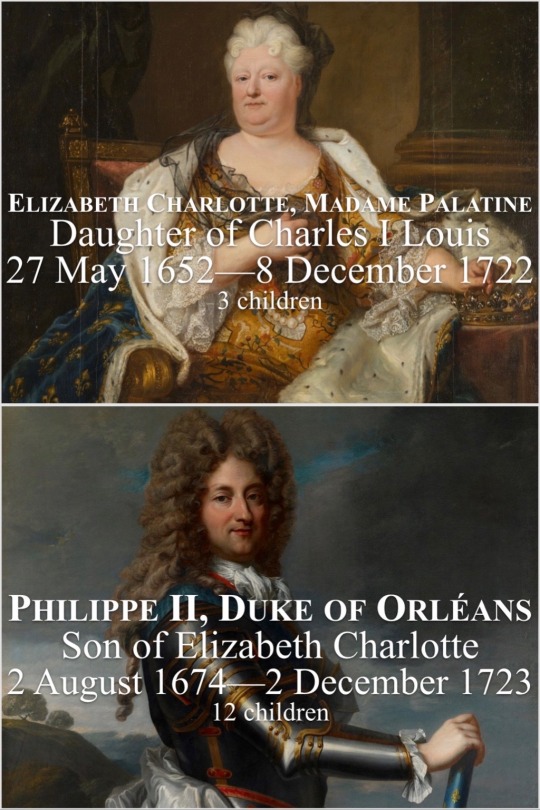


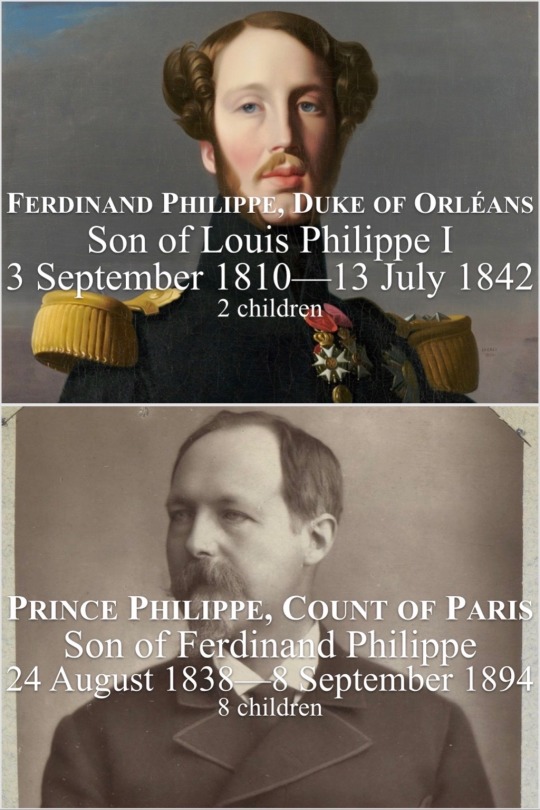
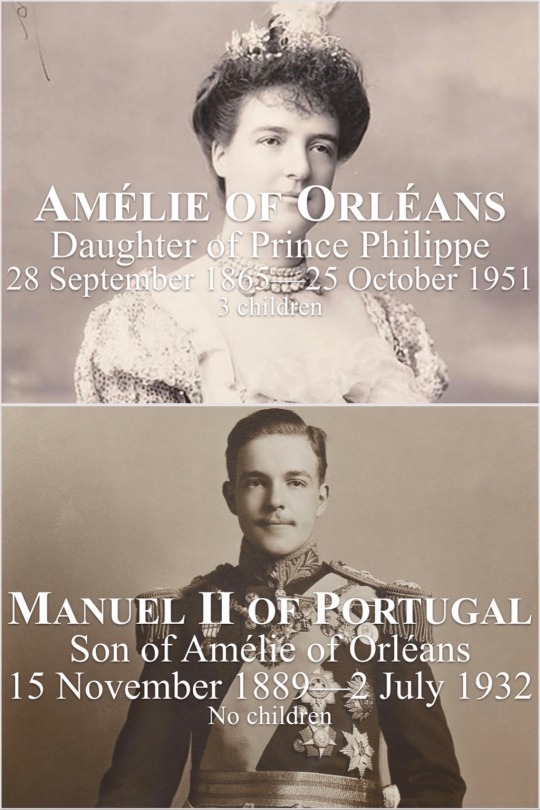
Descendants of the Tudors
#descendants of the tudors#henry vii#margaret tudor#james v#mary queen of scots#james vi and i#elizabeth stuart#charles i louis#elizabeth charlotte madame palatine#philippe ii duke of orléans#charlotte aglaé d’orléans#maria teresa felicitas d’este#louise marie adélaïde de bourbon#louis philippe i#ferdinand philippe duke of orléans#prince philippe#amélie oforléans#manuel ii of portugal
2 notes
·
View notes
Text

Portrait of Amélie of Orléans, Queen of Portugal by Vittorio Matteo Corcos, 1905
#new post#historical fashion#Amélie of Orléans#Vittorio Matteo Corcos#vittorio matteo corcos#early 1900s#circa 1900#circa 1905#historical#aesthetic#20th century fashion#queens#House of Orléans#pink aesthetic#pink#italian painter#portrait#royals#royalty#old royals#royal families#coquette
25 notes
·
View notes
Text
Infanta Maria Francisca's Wedding Tiara
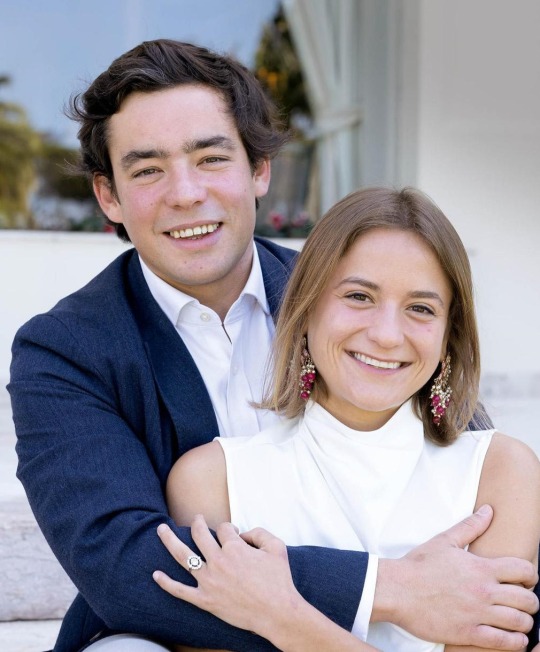
The Duke and Duchess of Braganza have announced that the wedding of Infanta Maria Francisca, Duchess of Coimbra, and Duarte de Sousa Araújo Martins will take place on Saturday, October 7th at the Basilica of Our Lady and Saint Anthony within the Palace of Mafra. Thanks to an interview with Observador, we know all about the bride's planned wedding jewelry. The quotes below have been run through Google translate.

Infanta Maria Francisca will wear Queen Amélie’s Diamond Tiara which is the same one worn by her mother, the Duchess of Braganza, at her wedding in 1995. "I feel very honored, very lucky, that they lent it to me, because it is a very valuable tiara. I feel that I am not that worthy of wearing the tiara and I am really happy that they gave me this opportunity." I don't have a post on it yet but here are some from other blogs. It was made in 1886 by Leitão & Irmão and was a wedding gift to Queen Amélie from her father-in-law, King Luís I of Portugal, so you'll sometimes see it called the Dom Luis Diadem.
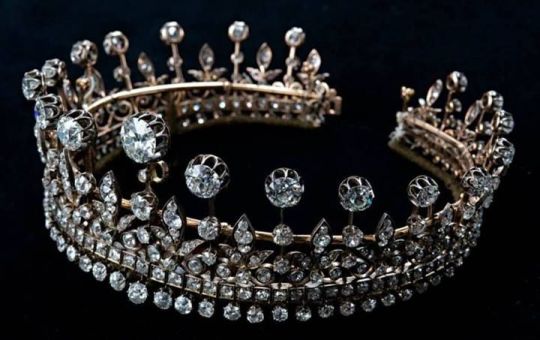
Along with the tiara, Maria Francisca will wear the same diamond earrings that were worn by her mother on her wedding day. They were a gift from the Duchess of Braganza's mother, Raquel Pinheiro de Castro Curvello.
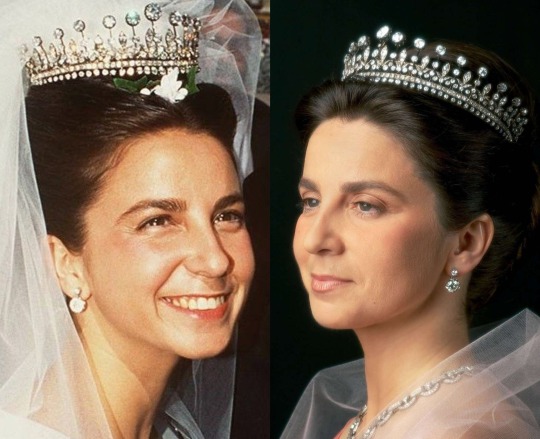
Maria Francisca will also wear a sapphire and diamond bracelet that belonged to Queen Amélie on loan from a friend. "A very dear friend of mine, who has an antique shop, is going to lend me a Queen Amélie bracelet. He told me 'I have this bracelet from Queen Amélie that I bought at an auction house and I insist that you wear it because it belongs to your family and has sentimental and historical value'."
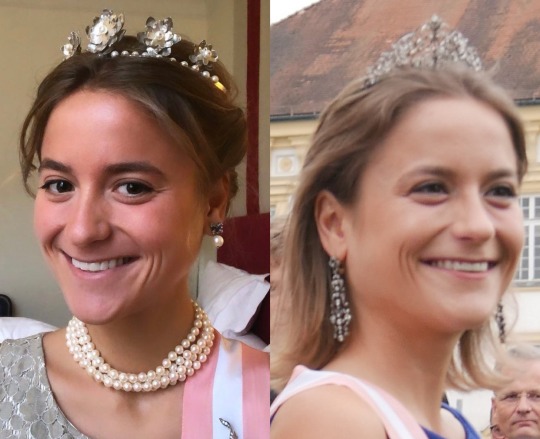
For the reception after the wedding, Maria Francisca will wear a pair of earrings that belonged to her grandmother and namesake, Princess Maria Francisca of Orléans-Braganza. The diamond from her engagement ring was taken from these earrings and the groom replaced it and another diamond with emeralds. "Both in the ring and in the earrings, I have my grandmother Francisca and Duarte represented."
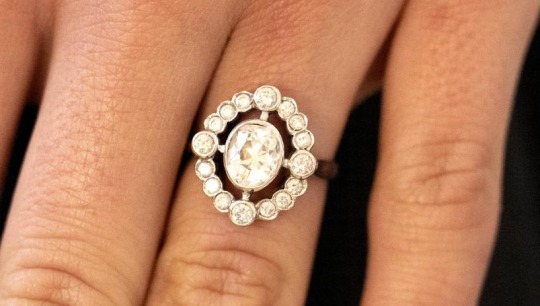
The former Portuguese royal family are generally well regarded and even attend state banquets in Portugal. We already know that some of the Lux royals will be there and I also expect other former royals to attend.
The wedding will be televised at 3:00pm local time on TVI (Televisão Independente) and I'll post a non-geoblocked link if I can find one.
#Tiara Talk#Infanta Maria Francisca#Portugal#Portuguese Royal Family#tiara#bridal tiara#Duchess of Braganza#royal jewels#royalty#royals#diadem
119 notes
·
View notes
Text


On August 26, 1852, the frigate Dom Fernando, equipped for Dona Maria Amelia [of Brazil]'s trip, sailed the seas towards the island of Madeira.
The health of the young princess was not very reassuring. Deep emotions preceded her departure from Lisbon. At her insistent request, Queen Dona Maria da Glória [II of Portugal], her sister on her father's side, brought her children to hug their young aunt; sad forebodings hovered over the melancholic family farewells. Tenderly hugging the oldest of the Infantas, Dona Maria Amelia blurted out these words: "It's not true, Maria, you won't forget me?!"
(...) On January 20 [of 1853], she [Maria Amelia] received a very affectionate letter from Queen Dona Maria da Glória, her sister, she was deeply moved and said: "My sister Maria loves me very much; I also love her dearly".
(...) On May 10 in the afternoon, the ship [that carried Maria Amelia's body back to Portugal] anchored in Cascais and parked there until the following day at ten o'clock. Passing through the forts at the entrance to the Tagus, she was greeted by all national and foreign vessels. The first were flagged in black.
Several great court figures had come to the tower of Belém, to meet the Empress [Amélie of Brazil, Maria Amelia's mother], and had climbed aboard. At noon, anchor was dropped in Terreiro do Paço. Delegations from the two Chambers and the municipality came on board and delivered speeches of condolence, to which the Empress responded with tears. A deeper emotion was in store for her: the Queen and the King came too. The Queen cried a lot; as she sprinkled holy water on her young sister's coffin, she certainly did not foresee that she would soon follow.
Almeida, Sylvia Lacerda Martins de (1973). Uma filha de D. Pedro I, Dona Maria Amélia
[Pictured: Daguerreotype of Princess Maria Amelia of Brazil, 1850 (left); daguerreotype of Queen Maria II of Portugal, 1849 (right)]
#princess maria amelia of brazil#queen maria ii of portugal#house of braganza#Uma filha de D. Pedro I Dona Maria Amélia#historicwomendaily
18 notes
·
View notes
Text
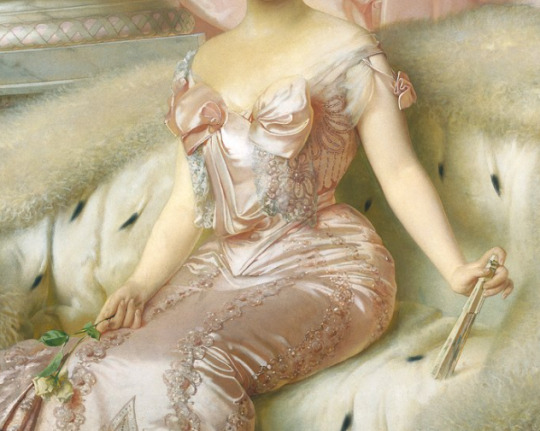
Vittorio Matteo Corcos, "Rainha D. Amélia" (1905), detail. (Portrait of Amélie of Orléans, Queen of Portugal)
via wikimedia commons
#vittorio matteo corcos#vittorio corcos#art#amelie of orleans#fine art#art history#art detail#art details#painting detail#20th century art#20th century painting#20th century paintings#turn of the century#fashion history#historical fashion#fashion details#italian art#italian artist#portrait painting#20th century portrait#portraiture
52 notes
·
View notes
Text
Our Contestants
1: Maria Leopoldina of Austria, First Empress of Brazil
2 Dona Maria I of Portugal
3: Dona Maria II of Portugal
4: Isabel, Princess Imperial of Brazil
5 Carlota Joaquina de Bourbon
6: João I, Duke of Bragança
7 João IV, King of Portugal
8: Afonso I, Duke of Bragança
9: Fernando I, Duke of Bragança
10: Jaime I, Duke of Bragança
11: Teodósio I, Duke of Bragança
12: Teodósio II, Duke of Bragança
13: Afonso VI of Portugal
14 Pedro II of Portugal
15: João V of Portugal
16: João VI of Portugal
17: Pedro II of Portual
18 Pedro I of Brazil/ IV of Portugal
19: Miguel I of Portugal
20: Pedro V of Portugal
21: Luís I of Portugal
22: Carlos I of Portugal
23: Manuel II of Portugal
24 Dom Pedro II of Brazil
25: Teresa Cristina, Empress of Brazil.
26: Catherine de Bragança, Queen Consort of England, Scotland, and Ireland
27: Infante Dom Manuel, Candidate for the throne of Poland
28: José I of Portugal
29: Carol II of Romania (Carlos II in Portuguese)
30: Ferdinand I of Romania
31: Infantá Antonia de Bragança, Princess Consort of Hohenzollern
32: Amélie of Leuchtenberg
33: Infanta Isabel Maria, Regent of Portugal
34: Mariana Vitória of Spain, Queen Consort of Portugal
35: Maria Francisca of Savoy (Consort to Afonso VI and Pedro II)
36: Maria Pia of Savoy (Queen-Consort to Luís I of Portugal)
7 notes
·
View notes
Text
The Baroque Portuguese Roosters - The Missing Porcelain Co… | Flickr
The Baroque Portuguese Roosters – The Missing Porcelain Collection of Queen Dona Amélia by Daniel Arrhakis (2023) Dona Maria Amélia (French: Marie Amélie Louise Hélène; 28 September 1865 – 25 October 1951) was the last Queen consort of Portugal as the wife of Carlos I of Portugal. She was regent of Portugal during the absence of her spouse in 1895. She was the eldest daughter of Prince Philippe,…
View On WordPress
0 notes
Text

Eldest three children of Prince Philippe, Count of Paris and Marie Isabelle d'Orleans. Late 1870s.
Princess Hélène (1871-1951), future Duchess of Aosta, Princess Amélie (1865-1951), future Queen of Portugal and Prince Phillipe, Duke of Orleans (1869-1926).
#princess Hélène of Orleans#duchess hélène of aosta#princess amélie of orleans#queen amelie of Portugal#orleans#french royal family#french royal#french royalty#late 1870s#prince philippe duke of orleans#prince philippe of orleans
23 notes
·
View notes
Photo
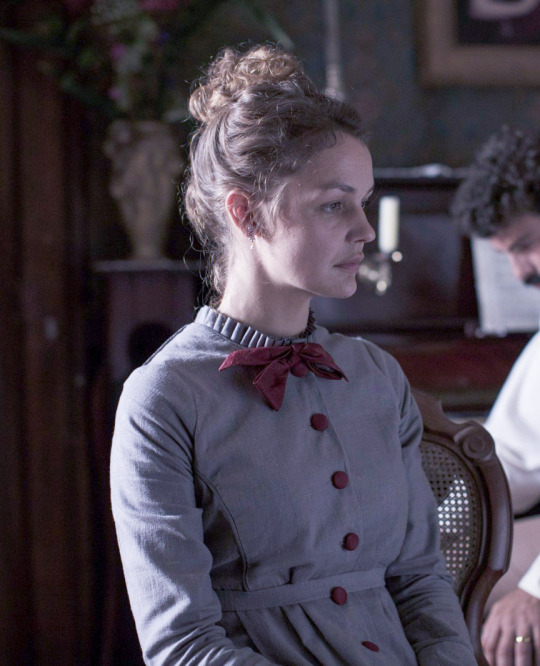
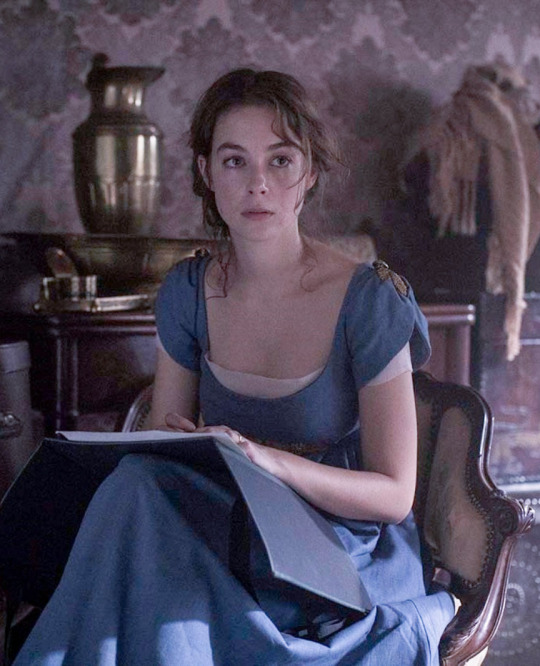
Luise Heyer as Maria Leopoldina of Austria, the Empress Consort of Brazil, Queen Consort of Portugal and Archduchess of Austria
Dona Maria Leopoldina of Austria (22 January 1797 – 11 December 1826) was born Caroline Josepha Leopoldine Franziska Ferdinanda of Habsburg-Lorraine in Vienna, Austria, Holy Roman Empire. She was the daughter of Holy Roman Emperor Franz II and Empress Maria Theresa of Naples and Sicily. In 1817 the Archduchess married Prince Dom Pedro of Braganza (12 October 1798 – 24 September 1834), heir to Portugal, later the Emperor Dom Pedro I of Brazil and King Dom Pedro IV of Portugal. The couple had 7 children: Queen Maria II of Portugal, Miguel, Prince of Beira, João Carlos, Prince of Beira, Princess Januária of Brazil, Princess Paula of Brazil, Princess Francisca of Brazil and Emperor Dom Pedro II of Brazil. On September 2, 1822 while she was the Acting Princess Regent of the Kingdom of Brazil in the absence of her husband Maria Leopoldina signed the Decree of Independence, declaring Brazil separate from Portugal. She died at age 29 in 1826 after a miscarriage. As Acting Regent Maria Leopoldina was the first woman to govern an independent Brazil, the first empress consort of the country, the first empress of the Americas and the first woman to govern an independent American country.
Victoria Guerra as Amélia of Leuchtenberg, the Empress Consort of Brazil and Duchess of Braganza
Dona Amélia of Leuchtenberg (31 July 1812 – 26 January 1873) was born Amélie Auguste Eugénie Napoléonne de Leuchtenberg in Milan, Kingdom of Italy. She was the daughter of Eugène de Beauharnais, Duke of Leuchtenberg and Princess Augusta of Bavaria, Duchess of Leuchtenberg. She was the second wife of Emperor Dom Pedro I of Brazil after their marriage in 1829 and they had one child, the Princess Maria Amélia of Brazil. After Dom Pedro I abdicated the Brazilian crown, Amélia accompanied her husband back to Europe. They held the titles of Duke and Duchess of Braganza until Pedro’s dead in 1834. Amélia died in Lisbon at the age of 60 in 1873.
A VIAGEM DE PEDRO | PEDRO, BETWEEN THE DEVIL AND THE DEEP BLUE SEA (2021). Dir. Laís Bodanzky
#a viagem de pedro#perioddramaedit#filmedit#movieedit#weloveperioddrama#worldcinemaedit#perioddramasource#onlyperioddramas#historicwomendaily#periodedits#braziliansource#cinematv#cinemapix#fyeahmovies#motionpicturesource#filmtv#filmtvdaily#userperioddrama#femaledaily#femalecharacters#flawlessbeautyqueens#historyedit#women in history#period drama#pedro between the devil and the deep blue sea#brazilian cinema#brazilian movies#mine#mine: edit#brazilian stuff
74 notes
·
View notes
Photo
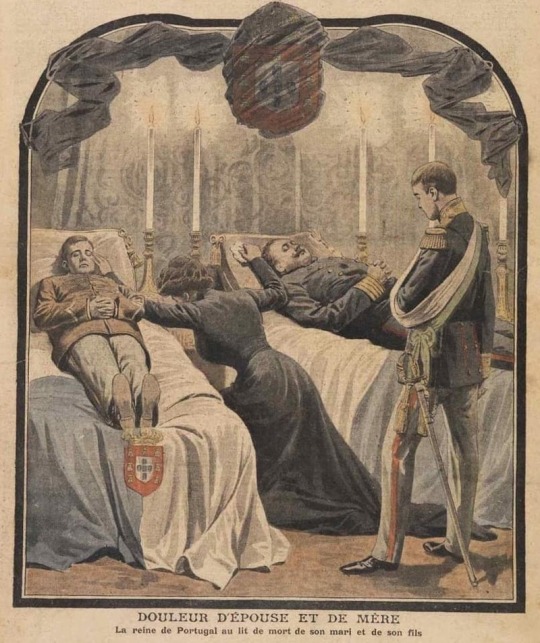
On February 1, 1908, the Portuguese royal family returned to Lisbon from a month-long holiday at Vila Viçosa. Disembarking from their train at Cais do Sodré station in central Lisbon, they boarded an open carriage for the last leg of their journey to the Queluz National Palace. While passing through the Praça do Comércio (Commerce Square), beside the Tagus River, they were ambushed by republican activists Manuel Buiça and Alfredo Costa. Armed with a rifle and pistol, respectively, they fired multiple shots into the the carriage, killing King Carlos I instantly, fatally wounding Prince Luis Filipe, striking Prince Manuel in the arm, and wounding the coachmen in one hand. Buiça also wounded a soldier, Henrique da Silva Valente, who intervened to spoil his aim. Only Queen Amélie of Orleans escaped injury, as police killed both assailants and an innocent bystander.
Born in Lisbon on September 28, 1863, the son of King Luis I and Queen Maria Pia of Savoy, Carlos Fernando Luis Maria Victor Miguel Rafael Gabriel Gonzaga Xavier Francisco de Assis José Simao boasted a roster of royal relatives including King Victor Emmanuel II of Italy, King Frederick Augustus III of Saxony, and King Ferdinand of Romania. Succeeding to the Portuguese throne upon his father's death, in October 1889, Carlos faced his first crisis three months later, with the British ultimatum of January 1890, breaching the 1386 Treaty of Windsor to dispute Portuguese territorial claims in Africa. Carlos signed the controversial Treaty of London in August 1890, relinquishing much of Angola and Mozambique, while furious protests errupted at home.
Chief among the protesters were leaders of the Portuguese Republican Party and the Carbonaria, a conspiratorial revolutionary society opposed to both the monarchy and the Catholic Church. Republicans won only 2.7 percent of the popular vote nationwide in 1906 – four seats in the National Assembly, all from Lisbon – but its support concentrated in the capital and in Porto, where party leader Bernardino Machado proclaimed, “We are the majority.” The Carbonaria, founded in 1896 by Artur Augusto Duarte de Luz de Almeida, prefered direct action to electioneering, organizing along military lines to recruit an estimated 40,000 members – including many frustrated republicans. Further agitation came from the Liberal Regenerator Party, organized by Joao Franco in 1901, and from Progressive Dissidence, founded by Jose Maria de Alpoim in 1905. Dissident parties battled one another, while condemning the monarchy for inefficiency and failure to support reform.
Carlos responded to that opposition by naming Joao Franco as prime minister in May 1906. Franco tried to form a coalition with Progressive Party leader and two-time former prime minister Jose Luciano de Castro, but failing there, he persuaded Carlos to suspend future elections until Franco deemed them practical, while jailing dissidents. Those moves predictably increased political tension, prompting Republican Party spokesman Alfons Costa to say that “for less than Dom Carlos has done, the head of Louis XVI fell.” Franco responded to increasing agitation with Costa's arrest, detention of 93 other republicans, and a ban on public meetings.
After the assassinations of February 1908, Prince Manuel was proclaimed king of Portugal. He proved to be the nations last monarch, deposed and exiled by a republican revolution in October 1910. Joao Franco was long gone by then, driven from office and from public life by successor Francisco Joaquim Ferreira do Amaral on February 4, 1908. A two-year investigation of the royal murders indicted several Carbonaria suspects on October 5, 1910, but they were spared from trial by a republican coup d'etat that deposed King Manuel II and established the First Portuguese Republic.
Famous Assassinations in World History: An Encyclopedia
#King Carlos I of Portugal#Queen Amelie of Portugal#Crown Prince Luis Filippe#King Manuel II#portuguese royal family#lisbon regicide#1900s
30 notes
·
View notes
Text

Marie Amélie Louise Hélène of Orléans, Queen consort of Portugal
British vintage postcard
#briefkaart#photography#vintage#portugal#tarjeta#queen#postkaart#postal#british#photo#orléans#marie#marie amélie louise hélène#postcard#historic#amlie#carte postale#orlans#hlne#ephemera#consort#sepia#ansichtskarte#postkarte#louise
3 notes
·
View notes
Photo

Amélie of Orléans, Queen of Portugal (28 September 1865 - 25 October 1951)
#Marie Amélie Louise Hélène#amélie of orléans#queen of portugal#portrait#women in history#portugal#long live the queue
6 notes
·
View notes
Text
AMÉLIE OF LEUCHTENBERG
Empress Consort of Brazil
(born 1812 - died 1873)
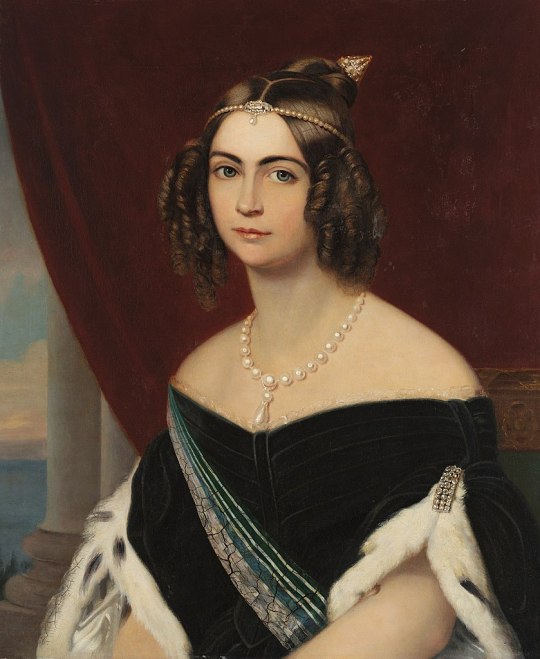
pictured above is a portrait of the Duchess of Braganza, by Friedrich Dürk from the 1830s
-------------------- ~ -------------------- ~ --------------------
SERIES - On this day July Edition: Amélie was born on 31 July 1812.
-------------------- ~ -------------------- ~ --------------------
AMÉLIE AUGUSTE EUGÉNIE was born on 31 July 1812 in Milan, the capital of the Kingdom of Italy under French control. She was one of the daughters of Eugène of Beauharnais, Viceroy of Italy and Princess Auguste of Bavaria, and thus was a member of the HOUSE OF BEAUHARNAIS.
At the time of her birth her family was living in Milan because her father was serving as Viceroy of Italy for his stepfather Napoléon I, Emperor of the French and King of Italy.
They lived in Milan until the Emperor's fall in 1814 and then moved to Munich where her grandfather Maximilian I Joseph, King of Bavaria created her father as Duke of Leuchtenberg. After which she became know as PRINCESS AMÉLIE OF LEUCHTENBERG.
In 1829 she married the widower PEDRO DE ALCÂNTARA FRANCISCO ANTÓNIO JOÃO CARLOS XAVIER DE PAULA MIGUEL RAFAEL JOAQUIM JOSÉ GONZAGA PASCOAL CIPRIANO SERAFIM. He was PEDRO I, the Emperor of Brazil, to where she moved and lived briefly as EMPRESS CONSORT OF BRAZIL, and was the eldest son of João VI, King of Portugal and Infanta Carlota Joaquina of Spain. He had seven children with his late wife Archduchess Maria Leopoldine of Austria and many other illegitimate children.
Before her wedding, her husband had also briefly reigned as King Pedro IV of Portugal in 1826 but had abdicated the Portuguese throne to his eldest daughter Maria da Glória, Princess of Grão-Pará, who became Queen Maria I. However her brother-in-law Infante Miguel usurped her stepdaughter's throne and reigned as Miguel I, King of Portugal from 1828.
So her husband decided to return to Portugal in 1831 to fight the usurper King and also abdicated the Brazilian throne to his son Pedro, Prince Imperial, who succeeded as Emperor Pedro II.
After the second abdication her husband assumed the title of Duke of Braganza, and she became the DUCHESS OF BRAGANZA. At that time she was already pregnant and they soon sailed from Brazil to Europe.
While her husband fought in Portugal she lived in Paris with two of her stepdaughters Maria da Glória, now the Princess Imperial of Brazil and her husband's illegitimante daughter Isabel Maria de Alcântara, Duchess of Goiás. There she gave birth to her only child.
By May 1834 her husband forced his brother to abdicate and her stepdaughter returned to her rightfull throne.
Following this event she went to live in Lisbon with her husband and young daughter. However a couple of months later her husband fell ill by October 1834 he was already dead.
As a widow she became known as the DOWAGER DUCHESS OF BRAGANZA. She was only 22 years old and decided to stay in Portugal with her daughter and stepdaughter, who ended up briefly married to her brother Auguste, Duke of Leuchtenberg.
However over the years she struggled to get support and recognition for her daughter from the Brazilian Regency Council, at least until her stepson took the power for himself.
She never remarried and lived in Portugal for the rest of her life. Her daughter predeceased her, dying aged 21, while the Dowager Duchess of Braganza died aged 60, in Lisbon, in 1873.
-------------------- ~ -------------------- ~ --------------------
AMÉLIE and her husband PEDRO I had one child...
Princess Maria Amélia of Brazil - unmarried.
#amelie of leuchtenberg#amelie de beauharnais#empress of brazil#imperatriz amelia#imperatriz do brasil#beauharnais#house of beauharnais#empire of brazil#imperio do brasil#brasil imperial#french royals#french royalty#german royals#german royalty#royals#royalty#monarchy#monarchies#royal history#french history#german history#european history#world history#history#history lover#19th century#familia imperial#dom pedro i#napoleon bonaparte#history with laura
26 notes
·
View notes
Text
Upcoming Portuguese Wedding

The Duke and Duchess of Braganza have announced the engagement of their daughter, Infanta Maria Francisca, and Duarte de Sousa Araújo Martins. The Duke of Braganza is the current claimant to the Portuguese throne and the family is still invited to many royal events and even attends state banquets in Portugal.
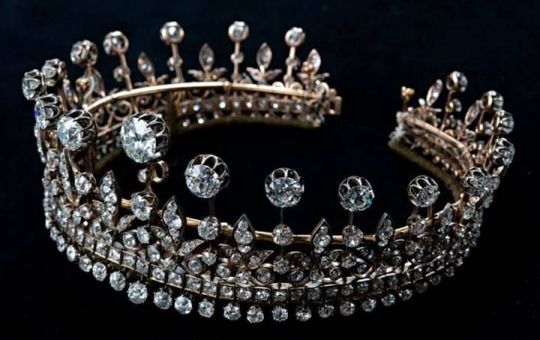
I'm hoping that Infanta Maria Francisca wears Queen Amélie's Diamond Tiara like her mother did on her wedding day. I don't have a post on it yet but here are some from other blogs. It was made in 1886 by Leitão & Irmão and was a wedding gift to Queen Amélie from her father-in-law, King Luís I of Portugal, so you'll sometimes see it called the Dom Luis Diadem.
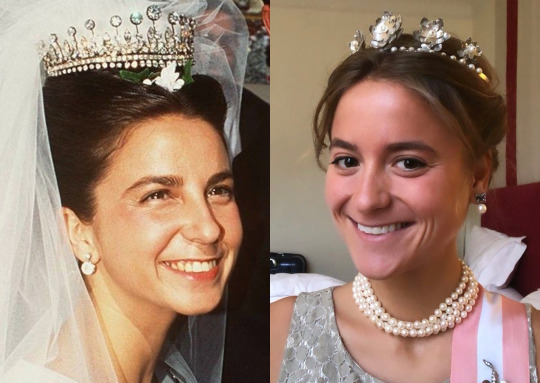
The royal wedding calendar is really filling up for 2023. I'm not even going to be able to feature them all in my tiaras to look forward to post.
#Tiara Talk#Infanta Maria Francisca#Portugal#Portuguese Royal Family#tiara predictions#tiara#Duchess of Braganza#Leitao and Irmao#diamond#bridal tiara
55 notes
·
View notes